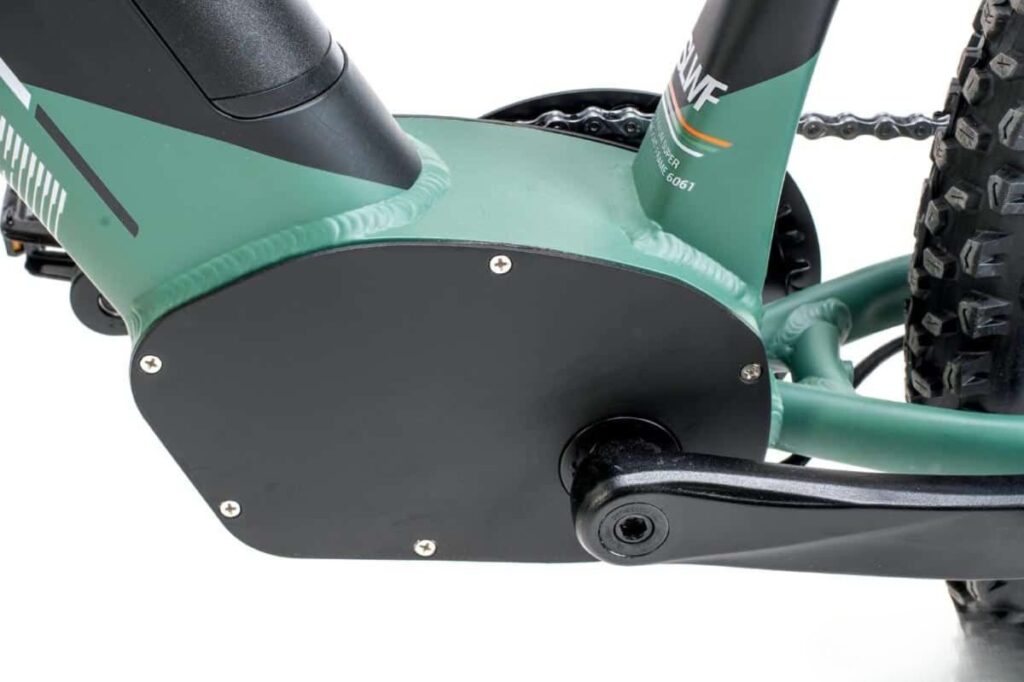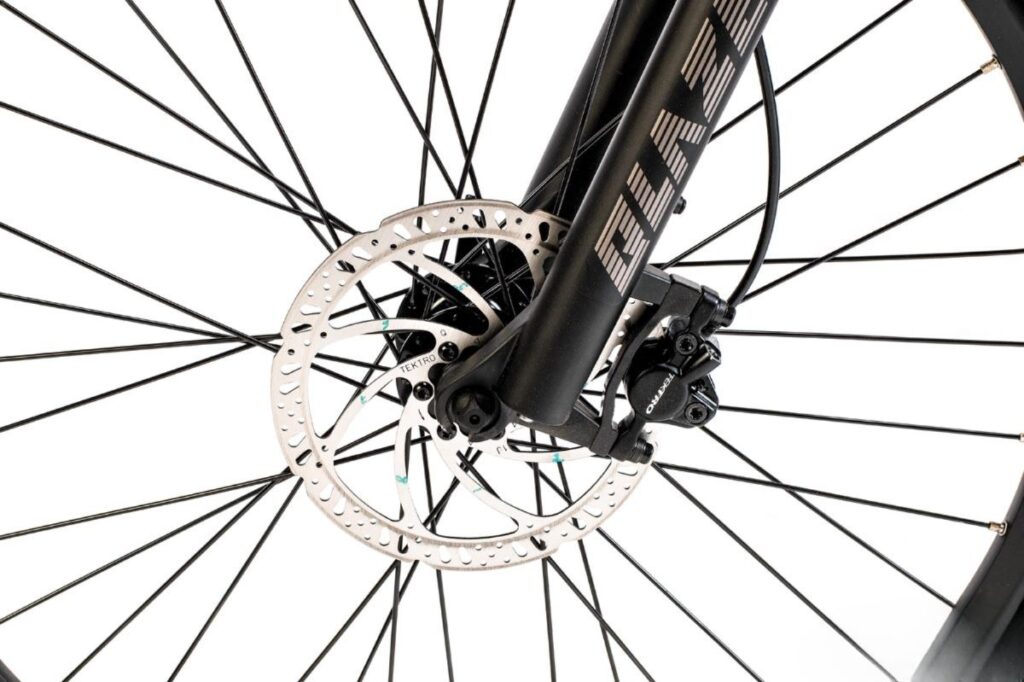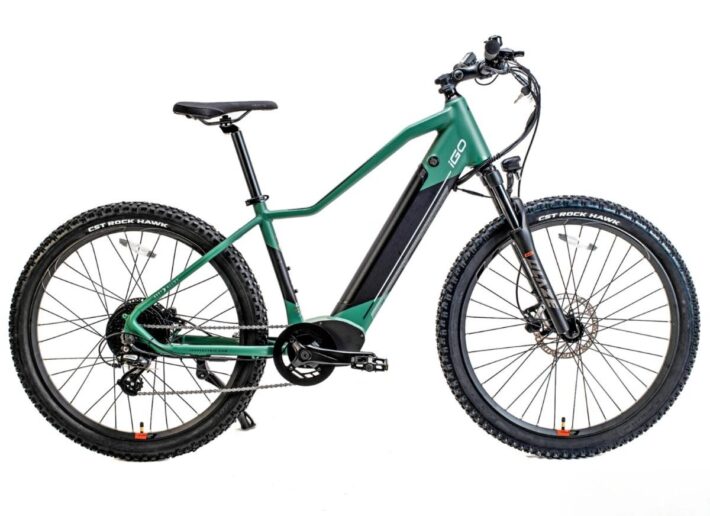As more and more companies manufacture e-bikes, it’s safe to say that picking the right one can be challenging. Not only do you have a huge number of brands to choose from, but it’s also vital to pick the appropriate model of e-bike.
That said, if someone told you a hub-drive e-bike wouldn’t work in the mountains, they’re only partially right. It’s true that a motor in the hub, as opposed to the mid-mount, will take more abuse. This can be especially true in a hardtail — such as the Core Edge from iGO — but in reality, this bike wasn’t built for hammering rough downhills and doesn’t have the same benefits of mountain e-bikes.
Putting The iGO Core Edge Through Its Paces
We decided to test how well the Core Edge handled thrashing downhills and came up with some interesting conclusions contradicting the word on the street. Putting the iGO through its paces allowed us to test a hub-drive mountain bike on the terrain it wouldn’t normally go through — just to see if it could.
About The iGO Core Edge
Weighing 58 lbs, the aluminum iGO is heavy even compared to some full-suspension e-bikes. We were happy to see an allotment of standard rack and fender mount bosses for the front and back end of the bike. Also, there’s one water bottle mounted on the inner part of the frame. The brake and derailleur cables are hidden in the frame but lengthy in the handlebar area.
The Parts
The 27.5-inch CST Rock Hawk tires wrap the aluminum house-brand rims. Tektro hydraulic discs supply braking power with 180mm rotors, and a brake-lever-actuated power cut off the sensors. The seatpost is 30.4mm in diameter, which is good to know if you want to fit a suspension seatpost. The 105mm-long stem has an adjustable 0-60-degree rise, and the 700mm-wide low-rise handlebars are narrow by modern mountain bike standards but sufficiently pair with this bike.
Shimano supplies the drivetrain with a Rapidfire 8-speed shifter and an Altus derailleur. The 11-34 cassette mates to a Prowheel 38t front chainring. The front suspension utilizes 100mm of travel with a basic RST Blaze fork with a lockout. There is a small headlight that helps to be seen but is not optimum for seeing clearly at night.

The Motor
The 500W motor provides up to 50 N/m of torque. The backlit display unit also contains the assist-level selector and a USB charging port. It will provide you with diagnostic codes, a light switch, a walk assist control, a speedometer, an odometer, and a trip meter. A 576Wh, 48V, 12Ah lithium-ion removable battery supplies electricity.
Combining all these specs with a throttle, the Rock Hawk rates as a class 2 e-bike. You’ll find nine power modes, which feel like too many to contend with when riding but offer more dynamic range attenuation. A standard 110/220V smart charger is used for charging. These chargers are a universal spec, unlike many big-name mid-drive units that all have brand-specific chargers.
Who The iGO Core Edge Is Made For
We would rate this as an entry-level e-bike. The Core Edge is ideal for people who want to ride smooth trails with little-to-no steep climbing. Having a relaxed position with an adjustable stem would be great for people with physical limitations. iGO claims the bike is “built to dominate,” but we think it’s a bit of a stretch considering it fits more in the leisure and cruising segment than extreme mountain riding.
The iGO Core Edge’s Off-Road Ride
Recognizing that price points play a role in any e-bike’s performance goals, any time a company categorizes their bike as a “mountain bike,” we take the claim seriously and feel that the claim (and bike) should retain some level of off-road viability. In short, it should be able to ride in the mountains!
With the appropriate tire pressure, the iGO was able to handle some gnarlier trails than we first expected. The bike wasn’t designed for what we threw at it, but we wanted to see how extreme we could get and how much abuse the hub drive could take.
Impressively, after hours of mountain riding, the motor was the least of our worries. Having all that weight placed in the bike’s rear wasn’t ideal for downhills, but the bike handled more than we expected regarding the descents. Making the climbs, however, was a different story.
The brake-lever-actuated power cut-offs made climbing anything technical a real challenge. This again limits the bike to smoother trails without any really steep sections. Brakes can be necessary on uphills when cornering or trying to maintain balance. But as soon as you hit the brakes, you instantly lose all power and momentum, making it tough to get going again. The bike works fine on smooth hills as long as they aren’t too steep.

The iGO’s range was impressive, notably on some long mountain bike rides. With 2,000 feet of climbing and about 15 miles, we only lost two out of five battery bars. We tried conserving the battery on flat sections and using all the power on hill climbs. On the highest level of assist, we ran the battery down much quicker but still went surprisingly far compared to many hub-driven motors.
Our iGO Core Edge Verdict
If it were our only bike, we would modify a couple of things. For instance, a dropper seatpost and/or a suspension seatpost, even a dropper with suspension travel built in. That and a shorter stem for added mountain-riding ability.
As we have experienced, bikes with hub-drive motors notoriously overheat on long climbs, especially if you aren’t helping it out with your legs. And, sometimes, they will overheat even if you exert plenty of energy. We are talking about the extreme situations many consumers may never put this bike through. While we never had overheating issues with the iGO, you need to know what you are buying and that it works for what you want to do. There is no reason this bike can’t get you outdoors having a good time, and for the money, we think the frame, motor, and components are valued fairly.
iGO Core Edge Specifications
Price: $2,399.99
Frame: Aluminum
Fork: RST Blaze 27.5” e-MTB 100mm travel
Motor: GO Drive 500W hub-drive
Battery: 576 Wh
Display: LCD backlit
Charge time: 3 hours
Top speed: 20 mph
Range: 47 miles (claimed)
Rear derailleur: Shimano Atlus
Chain: KMC X8 EPT rust-resistant
Brakes: Tektro hydraulic
Saddle: Selle Royal Viento
Dropper Post: N/A
Rims: iGO double-wall alloy
Hubs: iGo brand
Tires: 27.5”x2.4” CST Rock Hawk
Weight: 58 lbs
Color choice: Forest green
Sizes: One size fits all
Get more info on e-bikes like the iGO Core Edge by reading our guide to the pros and cons of mid-drive vs. hub-drive e-bikes.

